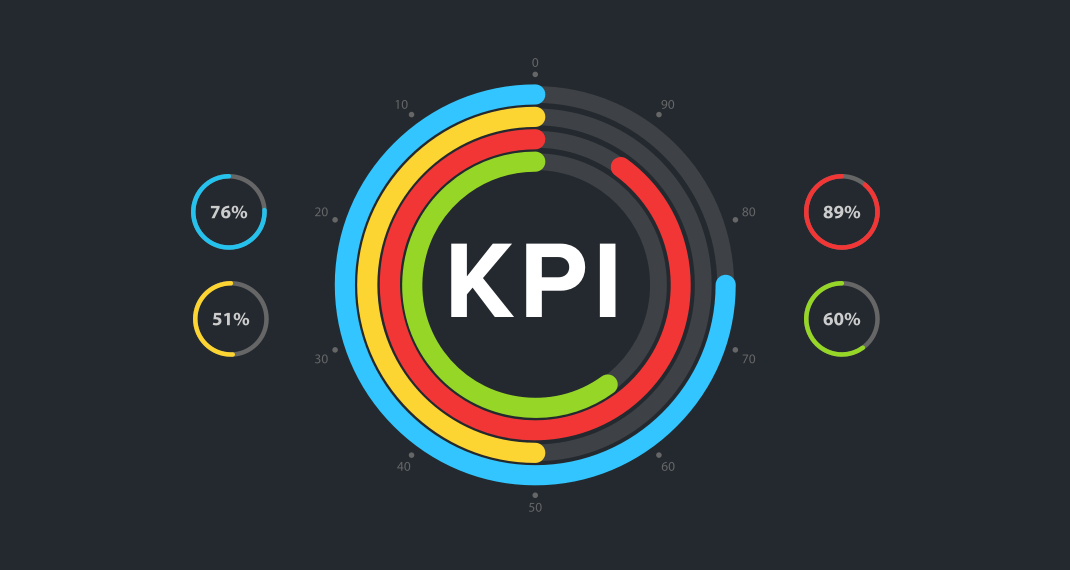Measuring the Right Things: What KPIs Should I Be Looking At?
Published by Spinutech on August 13, 2020

Knowing what and how to measure for your digital marketing efforts can be a key piece of the puzzle. Without accurate measurement, you will not be able to truly understand the impact of your campaigns and won’t be able to make incremental improvements to enhance your numbers.
Many times, we see clients focus solely on macro conversions — things like purchases or overall revenue. To truly get the whole picture of how consumers are interacting with your brand online, we recommend measuring a variety of KPIs (Key Performance Indicators) to help inform your future marketing decisions.
KPIs Centered Around Goals
Tracking metrics can show how you are progressing towards a goal, so to set your KPIs you first need to clearly define your goals. Although your ultimate goal may be to have a consumer make a purchase or full conversion, we recommend tracking toward incremental goals or “micro-conversions” to understand a consumer’s full path to purchase with you.
The goals you track could be around making a purchase, deepening average sessions, newsletter sign-ups, or some on-page action that a user may take. Your primary conversion metrics will likely depend on the goals for the page being tested. There are a number of goals we track for clients and what we track can vary by page. Here are some examples:
Homepage Conversions
- Navigation interactions
- Searches
- Time on page
- Scroll depth
- CTA clicks
Product Page Conversions
- Interactions with photos or materials (white papers)
- Number of similar product pages visited
Form Page Conversions
- Form starts (this number can be compared to the completion metric to determine drop-off)
- Time on page
- Exit rate — maybe the form is too early in the funnel or there is something wrong with the form itself (in the case of high form starts/low form completions)
Cart Conversions
- Interactions with add/remove features
Take the time to consider anticipated revenue per conversion. There is often a tipping point between revenue and conversion rates, so if you can drive less conversions with higher revenue the relationship between revenue and conversions becomes an area of focus. For example, this is common in eCommerce when we drive consumers to higher price point items. Tracking allows us to see that at times when the average number of purchases may go down but overall order values may go up. When volume decreases but value increases, the company still has an overall boost in revenue.
Always Measure in Multiples
We typically recommend measuring multiple KPIs to achieve well-rounded reporting. For example, you may have a primary goal with associated metrics as well as multiple secondary goals, each with their own reporting metrics. Your primary goal may be an appointment form, but secondary goals could include things like newsletter sign-ups, bounce rate reduction, product comparisons, or viewing a physical location page.
Tracking High Funnel Metrics
Oftentimes, we recommend focusing on consumer behavior higher in the purchase funnel or in the awareness stage. Shoppers in the awareness stage don’t typically jump directly to a purchase, so instead it can be productive to focus on changing site behavior and engagement through metrics like exit rates, bounce rates, or time on page.
The homepage and informational pages can be extremely important to the site overall, even if they are non-converting. This is where it’s helpful to measure metrics like time on page, number of pages visited within the session, or scroll depth. These types of measurements are all indicators of page health, even if the conversion rate is lower than other pages.
Macro vs. Micro Conversions
When tracking conversions, companies tend to zone in on the end goal — a primary conversion like a purchase or an appointment confirmation. However, we recommend tracking smaller conversions as a way to track progression toward an end goal. Anything can be tracked as a conversion. Some micro conversions we recommend include:
- Button clicks
- Scroll depth
- Email sign-ups
- Number of pages visited
- Visits to a specific page — sometimes visitors with a designated page in their path convert at a higher rate, so you may drive traffic to that page.
Think outside the end of the funnel when it comes to conversion goals.
A/B Testing
Once you’ve determined what to measure for each goal and conversion, testing becomes an integral piece of the puzzle. Allow ample time for metrics to successfully track before making changes. Implementing A/B testing can allow you to run simultaneous versions of your campaign to determine the most successful one for your goals.
When A/B testing, be sure to consider secondary goals and benchmark towards them as well as your primary goal. Secondary metrics can help determine the full picture of your experiment and lead to interesting insights giving meaning to otherwise neutral tests.